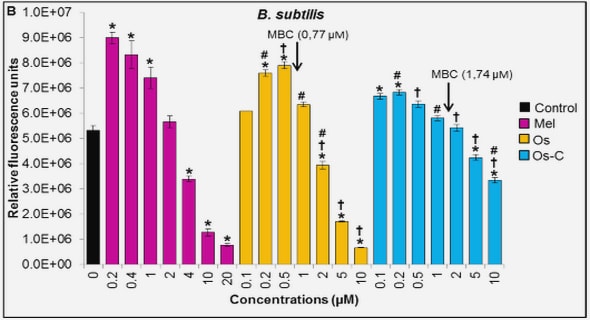Get Complete Project Material File(s) Now! »
Introduction
In this thesis, numerical investigations of 1-dimensional singularly perturbed (partial) dif- ferential equations are presented. The finite volume method is employed throughout. Each chapter represents scientific contribution in form of published, accepted, submitted or work in progress. The real world is filled with different challenges ranging from social, physical and engi- neering sciences. Reliable mathematical models offer the cheapest way of investigating these challenges. These mathematical models range from algebraic, differential, integral, algebraic- differential, algebraic-integral or differential-integro equations. Designing well-possed math- ematical models is essential so as to provide realistic solutions under reasonable and dy- namically consistent assumptions. Surprisingly, most of these equations, because of their complexity, as we will see later, are not amenable to analytical solutions. For this reason, there is need to develop approximate numerical solutions for these models. The size of sys- tem of equations, the number of unknowns, the nonlinearity in the equations and some other complexities in such equations coupled with limited space, time and human capacity con- strained individuals to make assumptions which at the end of the day reduces the strength and quality of the results, and consequently their applicability to real life models. Thanks to the advent of computer system, now we only need to develop numerical algorithms which are able to handle such equations with more realistic assumptions. Computational/numerical mathematics has gained much ground over a century now. It is a strong tool for scientific computing and very useful in solving problems from physical, economical, engineering and biological models. There are many different numerical methods for solving mathematical models. We have among many, the finite element method, finite difference method and finite volume method. Some of the common features of these methods are as follows. • Grid generation: This is the process by which the continuous space is represented by discrete points/grids in a numerical domain. a semi-discrete finite element scheme for the solution of the Cahn-Hilliard equation (1.1) – (1.2) was derived in [20]. They also derived optimal order error bounds in various norms. The Cahn-Hilliard equation (1.1) with boundary conditions u(0, t) = u(1, t) = uxx(0, t) = uxx(1, t) = 0 was considered in [16]. They showed the existence and uniqueness of solution based Faedo-Galerkin semi-discrete scheme and also presented a new finite element based fully discrete scheme which has a Lyapunov functional. The Lyapunov functional helped them to obtain point-wise estimate of the solution. These theoretical results were verified numerically by several authors (see [12, 13, 14, 22, 48] among others). Eyre [22] studied the solution of the Cahn-Hilliard equation (1.1) em- ploying a splitting method in which the contractive and expansive terms of the equation are separated across the time step. They noted that the flops reported in their work do not di- rectly apply to solving the Cahn-Hilliard equation in more than one spatial dimension. Later, their type of splitting was employed in [13] to solve the Cahn-Hilliard equation subject to free boundary condition and showed that unconditionally gradient stability is achieved in one, two and three dimensions with large time steps. Recently, Cueto-Felgueroso and Peraire [12] studied numerically the two dimensional phase separation problem governed by the Cahn- Hilliard equation using a time adaptive procedure. They were able to provide a quantitative characterization of the different time scales present in phase separation processes. The work in [85] on the Cahn-Hilliard equation with degenerate mobility enjoyed the use of tanh, ho- motopy perturbation and Adomian decomposition methods. The tanh method was used to find the traveling wave solution while the main equation was solved by the homotopy per- turbation and the Adomian decomposition separately. The work of Dehghan and Mirzaei [14] reproduce most of the properties of the Cahn-Hilliard equation. The authors employed a numerical method based on the boundary integral equation and dual reciprocity methods. Most recently, Lee et al. [48] introduced a gradient stable scheme to solve the N-component Cahn-Hilliard system. The method helped them to reduce the N-component system to a sys- tem of N − 1 binary Cahn-Hilliard equations which they solved with the aid of a nonlinear multi grid method. If δ > − √ 2, γ = 1, β = 0, the asymptotic solution of equation (1.1) takes the form of a valley and is called a kink while it takes the form of a hill (anti-kink) if δ < √ 2 [26]. The occurrence of a kink and anti-kink together is referred to as kink-anti-kink pair. In 1996, Emmott and Bray [21] studied the Cahn-Hilliard equation (1.1) in the presence of a driving force (i.e. δ 6= 0). They examined the effects of the driving force on the solution of the equation. They observed that it has an asymmetric effect on the solution for a kink and the direction of the field determines whether the analytic solutions derived earlier by Leung [49] are unique. They also studied the dynamics of a kink-anti-kink pair. Later, this problem was investigated by Golovin et al. [26] where they observed that the kink-anti-kink pair actually comes as the final result of coarsening on a periodic domain. They noted that such a solution does not exist for δ > √ 2 and that the far field solution becomes unstable when δ > 0.94. This was also confirmed by the work of Watson [86] and Watson et al. [87]. Watson [86] derived the convective Cahn-Hilliard equation (1.1) when examining the coarsening dynamics of crystal growth. He performed the direct simulation of the equation with δ = 0.1 while Watson et al. [87] performed a matched asymptotic analysis on the equation (1.1) (δ = 1, γ = 0.01) on a periodic domain. Both teams, Watson [86] and Watson et al. [87], agree on the impossibility of binary coalescence of phase boundary and the occurrence of ternary coalescence only through the kink-ternary interaction (i.e., two kinks meet an anti-kink resulting in a kink). They also concluded that when δ ≫ 1 the solution of the convective Cahn-Hilliard equation behaves like that of the Kuramoto- Sivashinsky equation. This was shown for a two dimensional case in [26]. Recently, the dynamics of domain walls (kinks) governed by the equation (1.1) with special interest in the dynamics of kink pairs and triplets that play crucial role in the coarsening process was investigated by Podolny et al. [69]. They were able to derive an analytical formula that describes the motion of the kink pairs and the triplets. Scaling the equation (1.1) by δ and letting ̄u = u δ gives rise to another interesting fourth order unsteady equation [26], the Kuramoto-Sivashinsky equation, their analysis, they arrived at p = 3/2. A weaker bound which was proved to be necessary in the presence of a linear destabilizing term was later introduced in [9]. Recently, a Lyapunov argument was followed in [63] to obtain bounds that are independent of the system size. The numerical solutions of the K-S equation have been widely investigated in the litera- ture. In particular, we highlight the Galerkin method [89], the Chebyshev spectral methods [43], the B-splines [46], the meshless method of lines [28], etc. The aim of these investi- gations have been on the accuracy [89], and/or how these solutions compare with the well documented benchmark solutions [64]. In [89], an explicit Runge Kutta method was used to avoid the restrictive stability limit of the fourth order derivative. Further advantage of the method is that the approach can easily be tweaked to obtain any required order of ac- curacy. Other approaches are based on simplifying the partial differential equation in order to reduce difficulties in its numerical approximation. For example, the B-spline approach by Lakestani and Dehghan [46] reduced the problem to a set of algebraic equations, while in [43] the equation was reduced to a system of ODEs that were solved by implicit-explicit BDF method. In this theses, we employ the fractional splitting method to simplify the analysis of equations (1.1) and (1.3).
Contents :
- Declaration
- Acknowledgement
- 1 Introduction
- 1.1 Higher order equations
- 1.2 Singularly perturbed equation
- 1.3 Numerical approach
- 1.4 Thesis outline
- 2 Fractional splitting method for higher order differential equations
- 2.1 Introduction
- 2.2 Numerical approach
- 2.3 Numerical experiments
- 2.4 Conclusion
- 3 Nonclassical methods for singularly perturbed equations
- 3.1 Introduction
- 3.2 Numerical approach
- 3.3 Numerical experiments
- 3.4 Conclusion
- 4 Nonclassical methods for higher order equations
- 4.1 Introduction
- 4.2 Numerical approach
- 4.3 Numerical experiments
- 4.4 Conclusion
- 5 Conclusion and future perspective
- Bibliography


